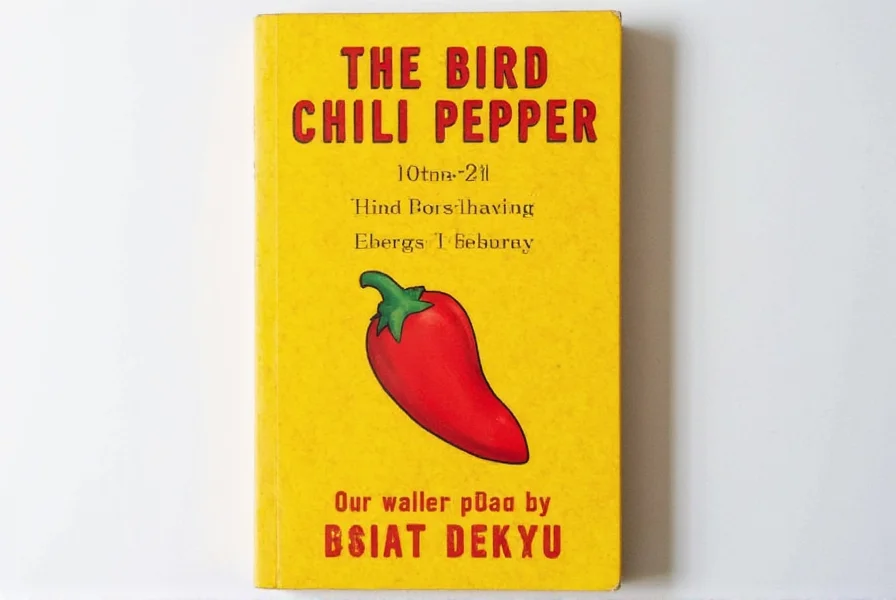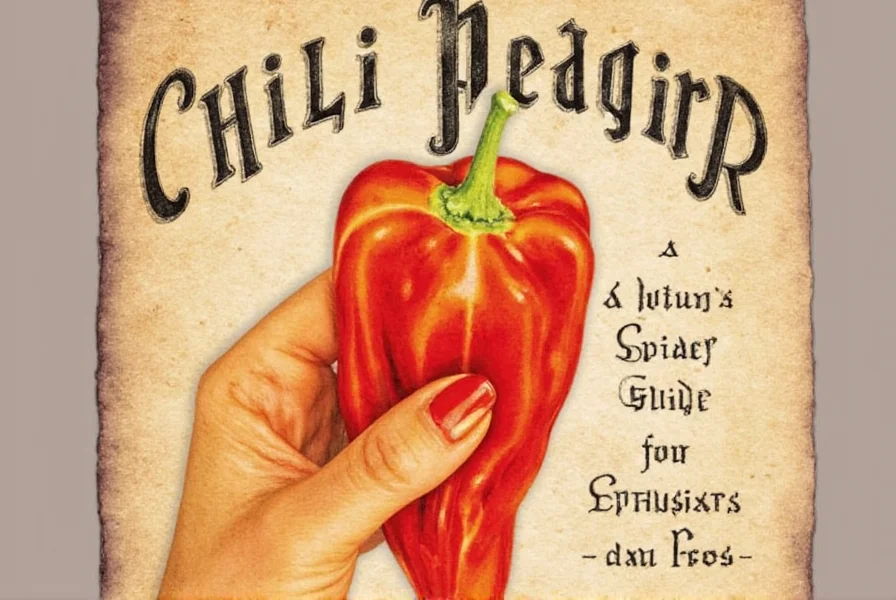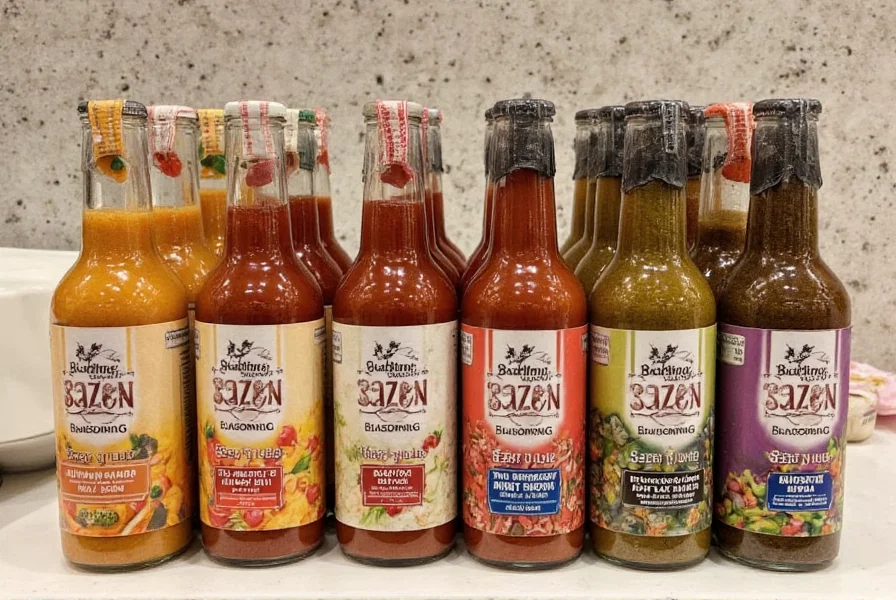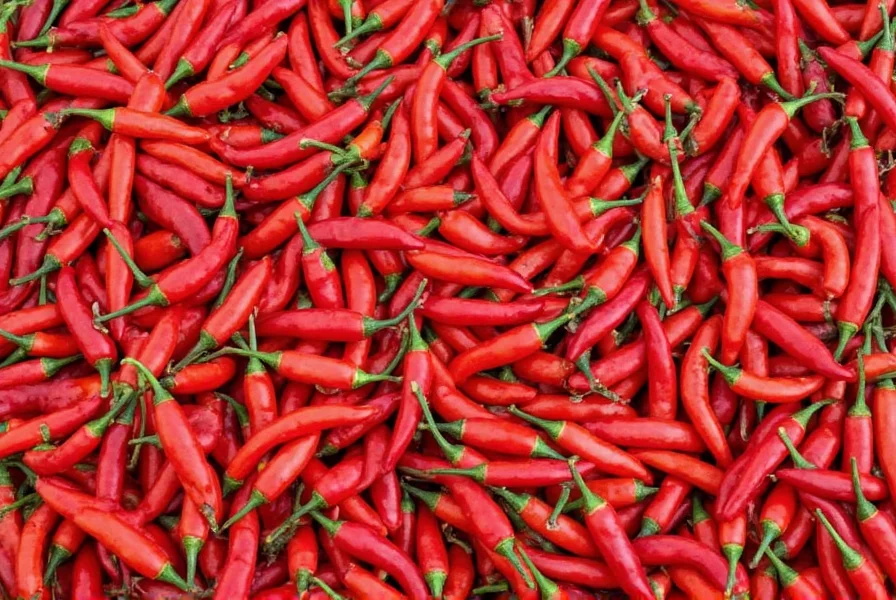Bird chili pepper (chili piquín) is a small but potent chili pepper native to Central America, with a Scoville heat rating of 50,000 to 100,000 units. It's known for its smoky flavor and is commonly used in Mexican salsas, hot sauces, and mole dishes. This guide covers everything you need to know about bird chili peppers, including heat level comparison, culinary uses, buying tips, and cooking techniques.
Understanding the Spice Level
The bird chili pepper is measured on the Scoville scale, which measures the heat level of peppers. On average, bird chilies range between 50,000 and 100,000 Scoville Heat Units (SHU). That places them in the medium to hot category, making them significantly hotter than jalapeños but not as intense as ghost peppers or Carolina reapers.
What makes the bird chili unique is its combination of heat and flavor. Unlike some very hot peppers that are purely spicy, bird chilies have a distinct smoky and slightly sweet taste, which makes them versatile in cooking.

Culinary Uses and Flavor Profile
The bird chili pepper is prized for its complex flavor. It offers a mix of heat, smokiness, and a slight sweetness. This makes it ideal for adding depth to salsas, stews, and sauces. When dried, it becomes even more concentrated in flavor and is often ground into powders for use in spice blends.
Here are a few popular ways to use bird chili peppers:
- Salsa: Fresh or roasted bird chilies are a staple in many Mexican salsas, especially those from Oaxaca and Puebla.
- Hot Sauce: They're often blended with vinegar, garlic, and other ingredients to create a fiery condiment.
- Mole: In traditional Mexican mole sauces, bird chilies add a deep, earthy heat.
- Seasoning: Dried bird chilies can be ground into a powder and used as a seasoning for meats, vegetables, and soups.
Buying Guide: How to Choose the Best Bird Chili Peppers
If you're looking to buy bird chili peppers, whether fresh or dried, there are a few key factors to consider. Here's a quick guide to help you choose the best ones:
1. Fresh vs. Dried
Both fresh and dried bird chilies have their own uses. Fresh ones are great for salsas and roasting, while dried ones are perfect for grinding into powders or using in spice blends.
2. Appearance and Texture
Look for firm, bright red peppers with no signs of mold or wrinkling. If buying dried chilies, they should be brittle and not soft or damp.
3. Origin and Quality
Peppers from Mexico, especially from regions like Oaxaca, are often considered some of the best. Look for organic or heirloom varieties if you want the most authentic flavor.
4. Heat Level
Not all bird chilies are the same. Some may be milder, while others are quite hot. If you're unsure, start with a small amount and adjust to your taste.
5. Packaging and Storage
For fresh chilies, store them in the refrigerator in a paper towel-lined container. Dried chilies can be kept in an airtight container in a cool, dark place for up to a year.
| Product Name | Heat Level | Use Case | Target Audience | Occasion |
|---|---|---|---|---|
| Bird Chili Powder | Medium-Hot | Seasoning, rubs, sauces | Chefs, home cooks | Kitchen, BBQ |
| Fresh Bird Chilies | Medium | Salsa, roasting, garnish | Cooking enthusiasts | Family dinner, parties |
| Dried Bird Chili Pods | Hot | Grinding into powder, spice blends | Spice lovers, chefs | Special occasions, gift giving |

Cooking Tips and Tricks
Whether you're a seasoned chef or just starting out, here are some tips to get the most out of bird chili peppers:
- Roast Before Using: Roasting bird chilies enhances their flavor and gives them a smoky depth. Simply roast them over an open flame or under a broiler until they blister and darken.
- Remove Seeds for Milder Heat: If you want a less intense flavor, remove the seeds and membranes before cooking.
- Pair with Creamy Ingredients: Bird chilies pair well with dairy-based ingredients like sour cream, cheese, or yogurt to balance the heat.
- Use in Small Amounts: Since they're potent, start with a small quantity and adjust to your taste.
- Experiment with Infusions: You can infuse bird chili peppers into oils or vinegars to create homemade hot sauces or dressings.
Comparison with Other Chili Peppers
While the bird chili pepper is unique, it's helpful to compare it with other common chili peppers to understand its place in the world of spices. Here's a quick comparison table:
| Chili Pepper | Heat Level (SHU) | Flavor Profile | Best Use |
|---|---|---|---|
| Bird Chili Pepper | 50,000 - 100,000 | Smoky, slightly sweet, medium-hot | Salsas, hot sauces, mole |
| Jalapeño | 2,500 - 8,000 | Mild, grassy, slightly sweet | Snacks, tacos, sandwiches |
| Chipotle | 2,500 - 8,000 | Smoky, slightly sweet, mild to medium | Stews, dips, barbecue |
| Ghost Pepper | 1,000,000+ | Extremely hot, fruity, sharp | Hot sauces, challenge foods |

Frequently Asked Questions
What exactly is a bird chili pepper?
A bird chili pepper (also known as chili piquín) is a small, potent chili pepper native to Central America. It typically measures about 1-2 inches in length and gets its name from its small size, similar to a bird's beak. Despite its diminutive stature, it packs significant heat ranging from 50,000-100,000 Scoville Heat Units.
How hot are bird chili peppers compared to other common peppers?
Bird chili peppers range from 50,000 to 100,000 Scoville Heat Units (SHU), making them significantly hotter than jalapeños (2,500-8,000 SHU) but less intense than ghost peppers (1,000,000+ SHU). They're approximately 6-40 times hotter than jalapeños, depending on the specific bird chili and jalapeño being compared.
What are other names for bird chili peppers?
Bird chili peppers go by many names including chili piquín, piri piri, pequín, chiltepin, bird's eye chili (though this can refer to similar small chilies), and in some regions simply "bird pepper." In Mexico, they're most commonly called "chili piquín" or "chiltepin."
Can I substitute bird chili peppers with other chilies?
Yes, but with caution. Good substitutes include Thai bird's eye chilies (similar heat level), serrano peppers (milder), or a combination of cayenne and smoked paprika to mimic the smoky-sweet profile. If you're sensitive to heat, use half the amount of substitute pepper and adjust to taste, as bird chilies are considerably hotter than many common alternatives.
How should I handle bird chili peppers safely?
Always wear gloves when handling bird chili peppers, as the capsaicin can cause skin irritation. Avoid touching your face, especially eyes, while working with them. If you get capsaicin on your skin, wash with soap and water or use milk or oil to help break down the compound. Never use water alone, as it can spread the oil.
Where can I buy bird chili peppers?
You can find bird chili peppers at Mexican grocery stores, specialty spice shops, and increasingly in mainstream supermarkets in the international foods section. They're also widely available online in fresh, dried, or powdered form. In regions where they grow wild (like parts of Mexico and the southern United States), they might be available at farmers' markets during harvest season.
How long do bird chili peppers last when stored properly?
Fresh bird chilies can last 2-3 weeks when stored in the refrigerator in a paper towel-lined container. Dried bird chilies maintain their flavor and potency for 6-12 months when stored in an airtight container in a cool, dark place. For longer storage, both fresh and dried chilies can be frozen, which preserves their quality for up to a year.
Are there health benefits to consuming bird chili peppers?
Yes, like other chili peppers, bird chilies contain capsaicin which has been linked to several health benefits including pain relief, improved metabolism, and reduced inflammation. They're also rich in vitamins A and C, antioxidants, and may support cardiovascular health. However, due to their intense heat, they should be consumed in moderation, especially by those with sensitive digestive systems.
Conclusion
The bird chili pepper is a flavorful and versatile spice that brings both heat and depth to any dish. Whether you're using it in a traditional recipe or experimenting with new flavors, this tiny pepper has a big impact. With the right techniques and a bit of practice, you can master the art of using bird chilies in your cooking.
Remember, the bird chili pepper is more than just a hot ingredient—it's a cultural treasure with a rich history and a unique flavor profile that deserves to be explored. So next time you're at the market, don't overlook these little powerhouses. They might just become your new favorite spice.











 浙公网安备
33010002000092号
浙公网安备
33010002000092号 浙B2-20120091-4
浙B2-20120091-4